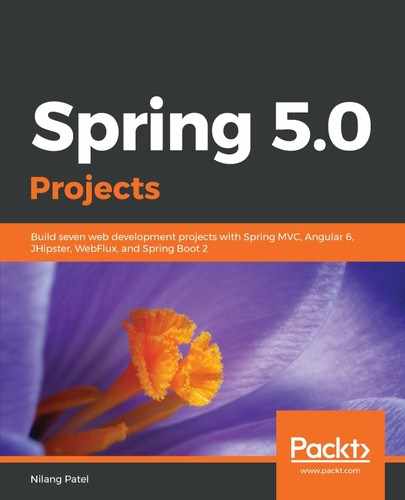We have been on a long journey. There is no better way to build an application than taking a real-life scenario and learning about the underlying concepts, tools, and technology. In this chapter, we took a blog application and built various layers with a set of frameworks.
Taking the Spring Framework as a foundation, we began our journey with Spring Boot—a rapid tool to propel the development, with all the underlying configuration to be done with a kind of auto-mode. We framed the first layer with the Spring MVC web framework in conjunction with Thymeleaf. Being a natural template engine, Thymeleaf is another way of constructing a view layer. We built the authentication and authorization, a very important part of the application, with Spring Security.
We implemented the data source of the Blogpress application with Elasticsearch—an open source highly scalable search engine, mainly used for indexing and analyzing purposes. After exploring basic concepts, we learned how to create an index, document type, and add the document data, followed by how to search them in Elasticsearch, by taking a sample of a student entity.
Moving on further, we learned to create the data structure with a nested object for our Blogpress application. Inserting data into and retrieving it from the nested object with various searching and aggregation mechanisms were the main crux of the data layer we implemented in Elasticsearch.
Taking a further step to bridge the persistence layer developed in Elasticsearch with the front-facing layer in Spring MVC, we used the Spring Data module. Then we leveraged the extension capabilities of the Spring Data framework to implement customized queries with the Elasticsearch Java API. In the end, we saw how the client-side template engine Mustache.js is useful to solve the problem of mixing the logic of dynamic data with HTML fragments.
In the next chapter, we will focus on making the application secure with Spring Security. We will talk more about the integration of Spring Security with OAuth 2—a widely used protocol for authorization. We will also look at Lightweight Directory Access Protocol (LDAP) integration with Spring Security to build a central application that supports authentication and authorization.
